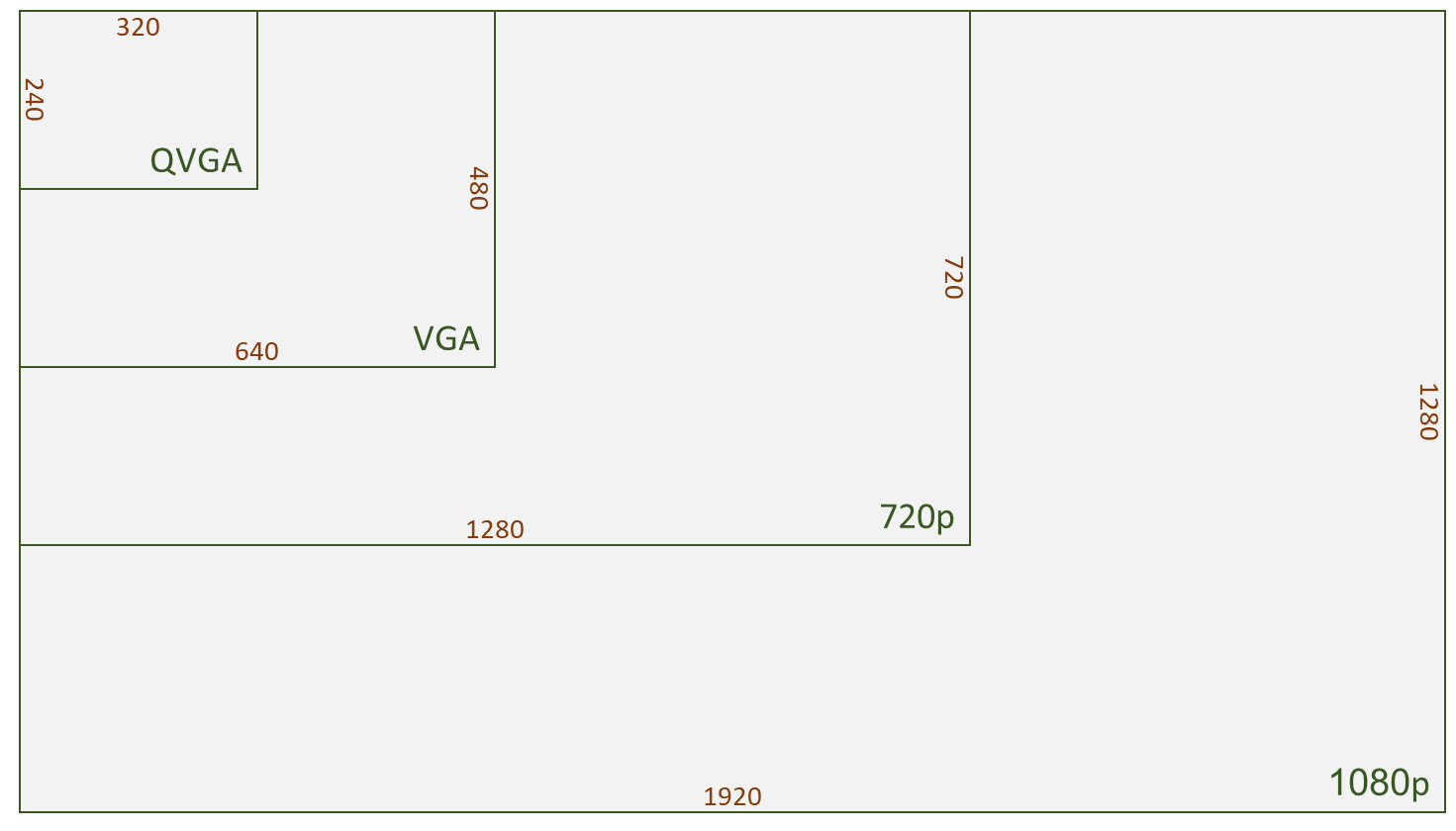Resolution is the number of pixels in an image.
In general terms, the higher the resolution, the better the image quality.
The following terms are used for different video resolution values that are common in video calling for WebRTC:
- QVGA – 320×240
- VGA – 640×480
- 720p (or HD 720) – 1280×720
- 1080p (or HD 1080) – 1920×1080
- 4K – 4096×2160

WebRTC isn’t limited in the resolution it can support. The limit is caused by browser implementations, processor capabilities and network conditions, as the higher the resolution, the more computation and bandwidth it requires.
Most WebRTC implementations to date have been able to reach 1080p resolutions, with 4K decoding starting to be introduced.
Understanding Resolution
At its core, resolution is the number of pixels in an image. Each pixel is a tiny dot of color, and when you have millions of these dots close together, they form the image you see on your screen. Think of pixels as the building blocks of an image. The more blocks you have, the more detailed and clear your image will be.
Why Resolution Matters in WebRTC
In the world of WebRTC, where real-time communication is paramount, resolution plays a crucial role. A higher resolution means a clearer, more detailed video image. This is especially important in professional settings where clarity can make the difference in understanding visual data, reading facial expressions, or even ensuring that sign language is clearly communicated.
However, there’s a trade-off. Higher resolutions, while offering better image quality, require more bandwidth and processing power. This means that if you’re on a slow internet connection, trying to stream video at 4K resolution might lead to stutters, packet loss and poor video quality.
For the most part, video quality is a factor of 3 main parameters:
- Bitrate, which is limited by bandwidth available and device capabilities
- Frame rate, when multiplied by the resolution, you get the number of pixels per second that needs to be processed
- Resolution
While bitrate is usually determined “externally”, the application can then decide if it wishes the video to be of a higher fidelity (=higher resolution) or higher fluidity (=higher frame rate) – increasing one means reducing the other. Increasing both together usually means reducing quality.
What is the highest resolution that WebRTC support?
Theoretically? The sky is the limit.
Practically, it depends on the specific implementation of WebRTC that you are using, the video codec, the network bandwidth available and the CPU of the devices used.


